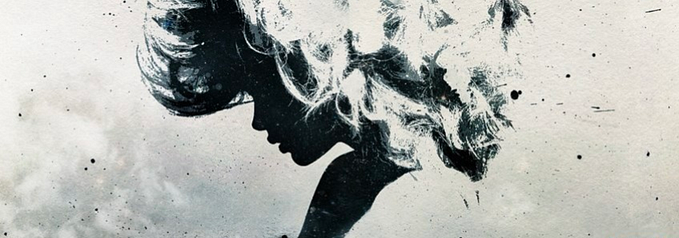
If you have ever found companionship in a border collie, you know that you spend a great deal of your time outdoors. This is a shared passion between myself and my border collie friend, Franklin. That being said, since the day I adopted him I have associated being outside with spending time with him. How rude would it be if I went for a walk and left him behind? (Franklin would say very rude).
I have spent many hours this past month considering my relationship to the Land (locally) around me and my relationship to the Earth as a whole. Now since the time that I spend outside is time I spend with Franklin, I feel that it would be necessary to include him in that same conversation. (Hear me out). Our Land and, by consequence, our relationship with it, is shaped by all those who travel through it. Animals, humans, plants, insects, bacteria, and every other living being have a relationship and location with Land. Frank’s footprints (or pawprints) leave an impact on our local environment. I want to question and examine specifically how the human/canine friendship (like mine and Frank’s) affects our relationship with Land and ecology in general.
One of the most important things I consider when Franklin and I venture out is whether the trail or park we visit is “dog-friendly”. I want to be respectful of others and the environment around us, so we only visit places where dogs are allowed and welcomed. The reflections of our time spent with Land that follow are spaces that are specifically designated for humans and dogs to get outside together.
Here are my guiding ideas for this project:
- Studying can be done outside, away from institutions of education
- Sometimes our community is non-human (dogs!)
- What can we learn while spending time on our own (human-wise) but together with Land and the non-human world?
- How are we a part of the naturalcultural environment that we travel through?
- I want to take note of the remnants of human travelers that have been left behind. (the visuals of dog bags, toys left behind)
- How do places become familiar to us (human and non-human)? How does this impact our relationship with specific lands/spaces?
Together Franklin and I went to three of our favorite places and recorded a bit about our time there.
Wednesday, September 29th

We are fortunate to share a small collective community garden in our neighborhood. It was assembled and established by our HOA, but is cared for by our little community. It is primarily comprised of various vegetables, with a small section of herbs in the middle. My favorite plants are the variety of chiles that luckily enough tend to grow in great quantities. I love to use the fresh produce in the meals I cook, but I love even more how the garden builds a sense of community and shared responsibility. There are little picnic areas that have benches and grassy areas (probably an idea of the developers since our houses do not have private yards). It encourages folx to gather together outside and share the land we occupy. It is also great for Franklin who is well acquainted with his canine neighbors, as well as distant friends with the neighborhood cats that sometimes wander out to say hello.
On this day, we went out to collect some vegetables for dinner and Franklin spotted his Labrador friend, Milo, from across the street. He is always more than happy to see his canine friends as well as his human ones. My neighbor, Milo’s owner, asked what treats I picked from the garden and I shared what I was planning for dinner. We traded recipes and let the dogs say their hellos and goodbyes before I headed home. I was left thinking about the community garden for the remainder of the evening. Shared land fosters a sense of community and responsibility for one another. The key word here is shared. Land that is owned, stolen, or harmed by those in powerful positions holds a distinctly different emotional response for those that live on it, use it, or travel through it. To complicate this thought: Legally, the garden is owned by the HOA, yet it is collectively cared for by the individuals that live with it. Who then holds ownership, those with the “deed to the land” or those who are responsible and care for it? How does the way we legally relate to land affect our care for land, if it all?
Friday, October 1st
On this lovely Friday, we spent time at our favorite dog park which is maintained by the city we live in (another excellent opportunity to pose questions of land ownership). We come here about three times a week to enjoy the company of other dogs and people in a space that allows Franklin some freedom to run and play as he chooses. The small stretch of grass, a few surrounding trees and scattered picnic benches make up one of our favorite places to spend time together. One of my gripes with this park, however, is the litter left behind by both humans and dogs (although I do not perceive the dogs to be the cause of said issue). There are some discarded objects that are nice to find, at least for Franklin. He loves finding beaten up tennis balls, old frisbees, and the occasional squeaky toy. He brings them to me, tail wagging and clearly full of pride. I wish I could have that same optimism and wonder when coming across these items left for trash.

Of course the more annoying, less treasurable evidence of park use is the awfully frequent, uncollected dog poo. It is almost a guaranteed sight, at any form of park. It is a way of stating “humans and dogs were here” (full circle moment). At the end of the day these spaces are shaped by all those who visit them, human and non-human. What makes the environment unique and specific are the unique and specific beings that leave an impact on the land. It is how we relate to and create our own ecology.
Saturday, October 2nd

For our last day of reflecting, we chose to visit a local off-leash dog trail. I enjoy this place a lot, but I will admit it makes me a bit nervous to let Franklin wander a bit on his own without fences that keep him in my sight. Frank is a very curious dog who loves to carefully examine each plant, person and animal he comes across. He says hello to all those who have the pleasure of walking past him, regardless of their interest in him, a true optimist at heart. I admire his courage, curiosity and endless kindness and I love learning from him. How would we view our naturalcultural environment if we all approached Land and each other the way in which he does? (Naturalcultural in this sense meaning the inseparable link between nature and the culture attatched to it.) Would we all have a sense of respect and duty to be kind to each other and the Earth if we approached ecology this way? In this sense we wouldn’t see the environment as something to be studies, picked apart, divided up and privatly owned. We could instead see our world as a way of meeting new people, new living beings, and new sights as our dogs view their walks.
Why do these reflections matter?
Towards the end of all of my thinking processes, comes the nagging question, “why does this matter?” Why have I spent a week thinking about dog parks and long walks outside with Franklin? To put it simply, this is the way in which I get outside (pretty much the only way). Thus, the way I relate to the Earth, Land, and ecology as a whole is through these specific interactions. They may not be scientific or typically associated with ecology or environmental studies, but they are relevant to the way I perceive the world and therefore they are how I relate.
How does this analysis fit into the broader picture of Land and the Earth? These reflections have raised several questions that have pushed me to be more critical of land ownership, land use, and land appreciation. The places I travel through have a complex history, the violence of colonialism cannot be ignored. The lands I occupy do not belong to me, nor to settlers like me. It is essential to be critical of the origins of all the spaces we are guests in, even if that may be a public trail or a city dog park. We must question who has access to these spaces and why. The same guiding questions I had at the beginning of my reflections can be applied to different naturalcultural environments. My thoughts can stretch outwards beyond this specific analysis to the way in which I perceive Earth as a whole.
I want to conclude this piece with a few final thoughts. Be kind to all humans, animals, insects and plants. And please pick up your dog’s poo.
Citations are important, here is who I have been thinking with while creating this project:
- Max Liboiron, Pollution is Colonialism
- Natasha Myers, “This is an Introduction, or, What is Happening?”
- Natasha Myers,“Becoming Sensor in Sentient Worlds: A More than natural History of a Black Oak Savannah”
- The class of The Global Environment and our professor Connie
- Franklin, of course









